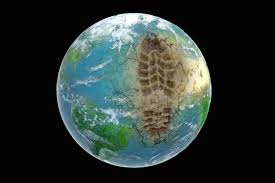
Are we now entering the Anthropocene, an age shaped primarily by people?
Some geologists say we are already living in the Anthropocene age: the age of man. For example, almost 90% of the world’s plant activity, by some estimates, is to be found in ecosystems where humans play a significant role, thereby putting further strains on the planet's resilience.
However, in 2020, scientists coined a new term: anthropause. They proposed to use this name to describe the global halt in human activity due to the coronavirus pandemic. Nevertheless, by the end of that year, manmade materials weighed more than all living things, a discrepancy which is only likely to get worse. According to a paper in Nature, in 2020 the mass of all human-made objects worldwide exceeded for the first time that of the living biomass, which includes all plants, trees, animals, and insects.
Then, in 2023, scientists said that we may have entered a new geological time period marked by humanity’s “irreversible” impact on the planet. They selected Crawford Lake in Canada as the monitoring site for this new Anthropocene epoch. Professor Francine McCarthy, a member of the Anthropocene Working Group, said: “The bottom of the lake is completely isolated from the rest of the planet, except for what gently sinks to the bottom”. However. plutonium from nuclear weapons testing has been found in sediment, which scientists believe indicates the start of humanity’s heavy influence on the planet in the 1950s.
Indeed, deep and undisturbed sediments beneath the waters of Crawford Lake show the build-up of compounds originating from fossil fuel burning and chemical production, radioactive isotopes from nuclear technology and biological materials from non-native species. This brought the term into wider public consciousness and focused attention on the severity of human impact on our planet.


